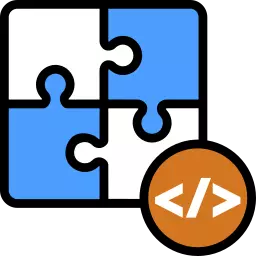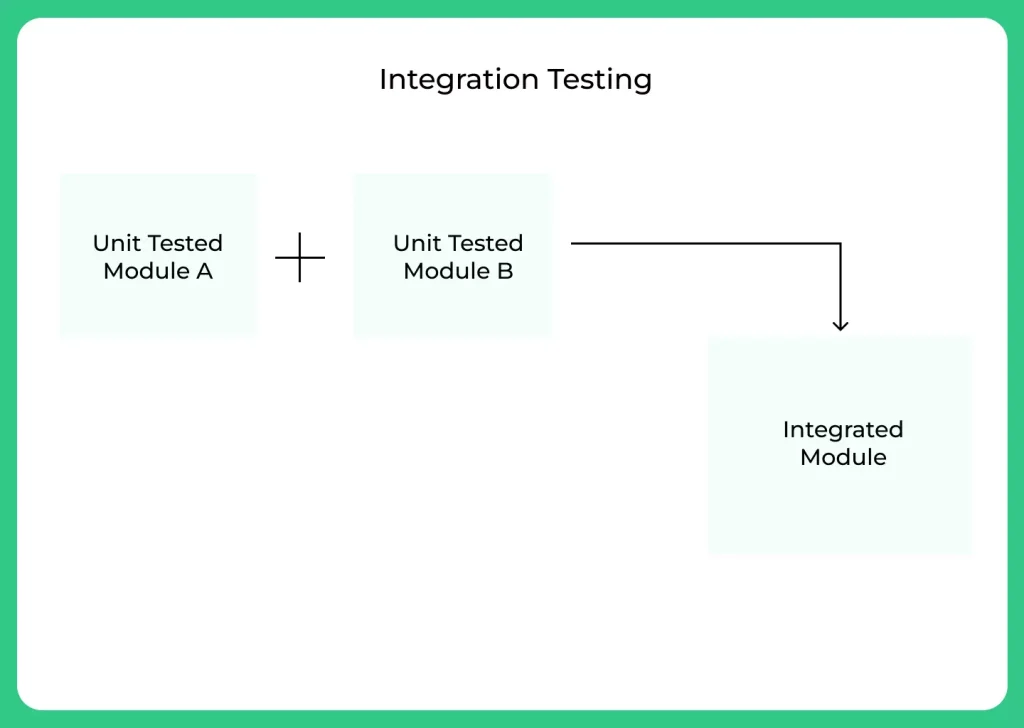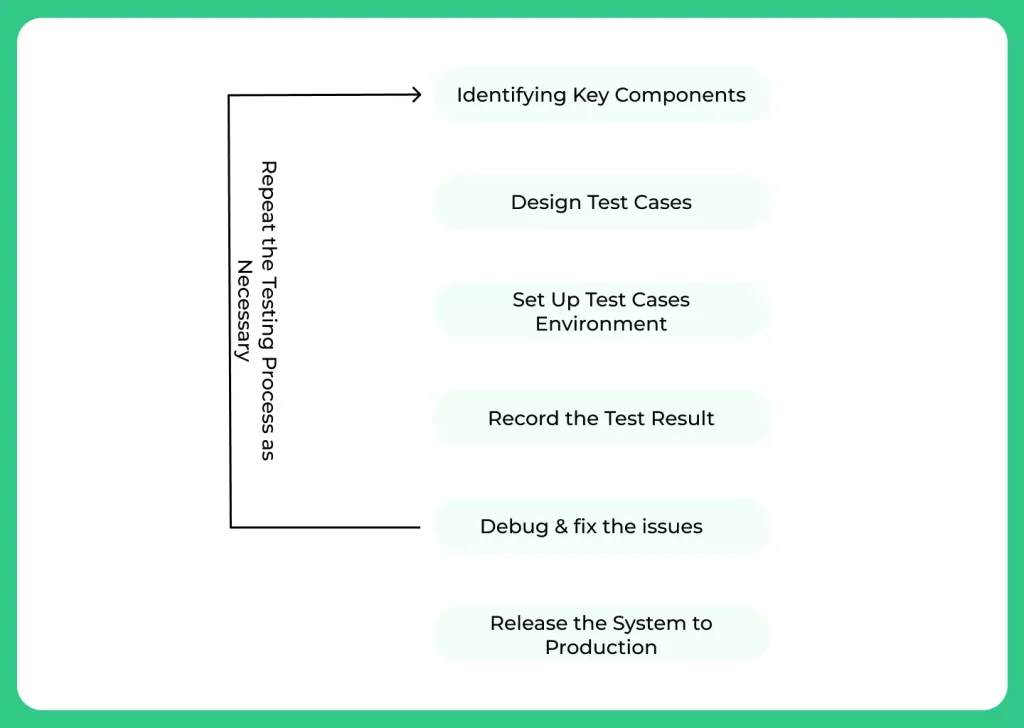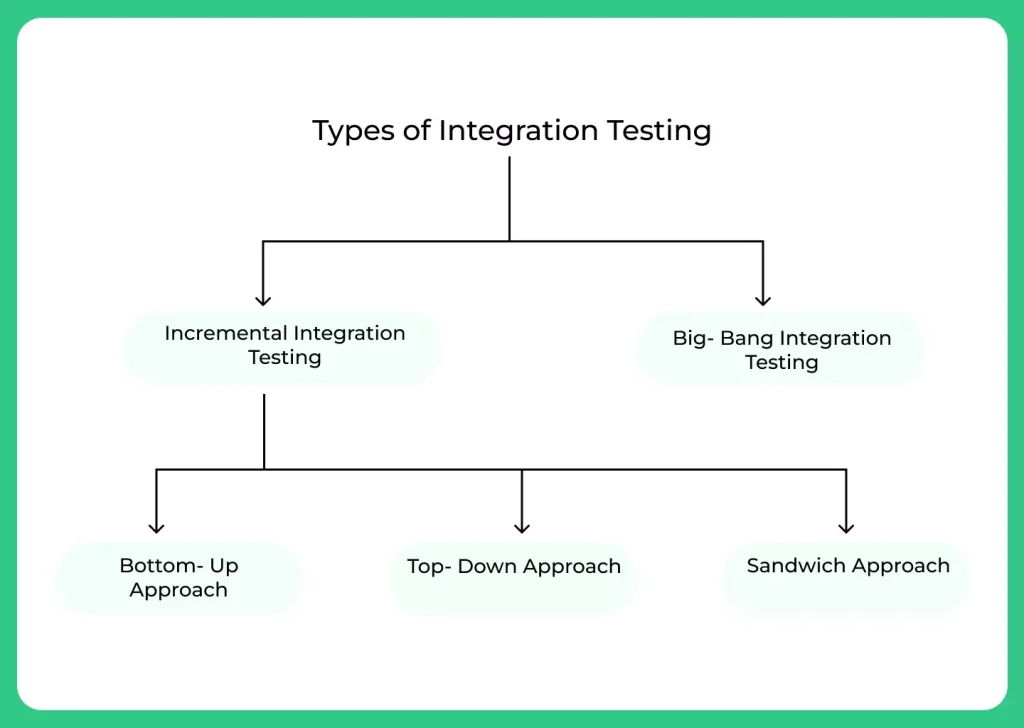Integration Testing in Software Engineering
What is Integration Testing?
Integration Testing in Software Engineering is a type of software testing that verifies that different components of a system work together as expected. It is typically done after unit testing and before system testing.
The goal of integration testing is to identify any issues that may arise when different components are combined, such as conflicts or data integrity problems. This type of testing can be done in a variety of ways, such as by testing individual modules together or by testing the entire system as a whole.

Objectives of Integration Testing in Software Engineering
Integration testing is a type of software testing in which individual units or components of a software application are combined and tested as a group. The main objectives of integration testing are:

- To ensure that different components of the application work together as intended and that the interfaces between them are functioning correctly.
- To identify and resolve any issues or conflicts that may arise when the components are integrated.
- To verify that the application meets the requirements and specifications defined in the design phase.
- To increase the confidence in the overall functionality of the application and identify any system-level defects.
- To identify any performance bottlenecks in the application and optimise the system accordingly.
- To reduce the risk of defects found later in the development cycle, which are more costly and time-consuming to fix.
Workflow of Integration Testing
Integration testing is a software testing method in which individual units of an application are combined and tested as a group. The workflow of integration testing typically includes the following steps:

- Identify the components or units that will be integrated and tested.
- Design the test cases that will be used to evaluate the functionality of the integrated units.
- Set up the test environment, including any necessary hardware or software.
- Perform the integration tests, using the test cases as a guide.
- Record the results of the tests and document any bugs or issues that are discovered.
- Debug and fix any issues that were identified during the testing process.
- Repeat the testing process as necessary to ensure that the integrated units are functioning correctly.
- Once all the bugs are fixed, you can perform end-to-end testing to ensure the full functionality of the system.
- Release the integrated system to production.
Difference Between Manual Testing and Automated Testing in Integration Testing (RAD Model in SDLC)
Manual Testing:
- Human Effort: In manual testing, a person manually executes test cases without using any tools or scripts.
- Flexibility: Testers can quickly adapt to changes and perform ad-hoc testing.
- Time-Consuming: It takes more time because each step is done by hand.
- Error-Prone: There’s a higher chance of human error, which might lead to missed bugs.
- Best for Exploratory Testing: Manual testing is ideal for scenarios where human observation and intuition are essential.
Automated Testing:
- Tool-Driven: Automated testing uses software tools to execute pre-written test scripts automatically.
- Consistency: The same test cases can be run repeatedly without variation, ensuring consistency.
- Faster Execution: Automated tests run faster than manual tests, especially for repetitive tasks.
- Initial Setup Effort: It requires an initial effort to write scripts, but once set up, it saves time in the long run.
- Best for Repetitive and Regression Testing: Automated testing is ideal for large projects where the same tests need to be run repeatedly after every change.
Types of Integration Testing

There are several approaches to integration testing, including:
Big-Bang Approach:
All components are integrated at once and tested as a whole.
Top-Down Approach:
The top-level components are integrated and tested first, followed by lower-level components.
Bottom-Up Approach:
The lowest-level components are integrated and tested first, followed by higher-level components.
Hybrid Approach:
A combination of the above approaches is used.
Continuous Integration:
Integration testing is performed continuously as new code is added to the system.
TO WRAP IT UP:
Integration Testing plays a crucial role in verifying that various components of a software system function together as intended. It helps identify interface issues, data inconsistencies, and system level bugs early in the development cycle, reducing costly fixes later on. By combining both manual and automated testing approaches, teams can ensure thorough and efficient validation of integrated units. Overall, integration testing enhances the reliability and performance of the software before it progresses to full system testing.
FAQs
Integration testing ensures that frequently changing components in agile workflows continue to work together smoothly. It supports continuous delivery by quickly identifying integration issues.
Integration testing focuses on interactions between modules, while system testing evaluates the entire application as a complete system. System testing includes broader aspects like performance and user behavior.
Common challenges include interface mismatches, data flow issues, and lack of proper test environments. Debugging can also be complex due to multiple interacting components.
While possible, skipping unit testing may lead to compounded errors during integration. Unit tests help isolate bugs early, making integration testing more effective.



Login/Signup to comment